EQ Coatings: Dispelling misconceptions through facts
by Katie Daniel | April 7, 2016 11:14 am

by Michael C. Kerner, FASTM, CDT, CSI
Over the past few years, much has been written and said about equivalent (EQ) coatings for cold-formed steel (CFS) studs. Despite this, or perhaps because of it, there are lingering doubts and misconceptions harbored by some specifiers about these products’ performance. However, They are code-approved coatings worthy of inclusion in project specifications.
While previous articles in The Construction Specifier offered an overview of the technology, this piece seeks to dispel any still-lingering misconceptions about EQ coatings in an effort to help specifiers make factually informed decisions on the types of cold-formed steel framing members and their coatings to include in project specifications. (For more on the topic, see the article, “Specifying EQ Coatings for Steel Studs,” by Gregory S. Ralph, which was in the April 2015 issue of The Construction Specifier. Visit www.constructionspecifier.com/ specifying-eq-coatings-for-steel-studs[1]).
Misconception No. 1: EQ-coated steel stud framing products are not recognized by IBC.
Simply put, EQ-coated products comply with the International Building Code (IBC)—a point proven in a recent lawsuit. (This is Clark Western Dietrich Building Systems LLC d/b/a ClarkDietrich v. Certified Steel Stud Association, Inc. et al, case 1:2013cv00818, Ohio Southern District Court, decided 2015). Specifiers will find a clear path in the building code for the approved use of these coatings starting with Chapter 25 of the code. This chapter sets forth the requirements for steel framing products used in wall assemblies.
Specifically, Section 2506.2 states in part the materials for wall assemblies “shall conform to the appropriate standards listed in Table 2506.2 and Chapter 35.” As shown in Figure 1, Table 2506.2 points to ASTM C645, Standard Specification for Nonstructural Steel Framing Members, as the required building code standard for non-loadbearing steel studs.
What does ASTM C645 require? Section 4.1 of this standard states the requirement for the steel sheet used to create nonstructural steel framing products, while Section 4.2 sets forth the coating requirements for the finished product. Section 4.2 explicitly states members shall have a protective coating:
- conforming to ASTM A653, Standard Specification for Steel Sheet, Zinc-coated (Galvanized) or Zinc-Iron Alloy-coated (Galvannealed) by the Hot-dip Process—G40 minimum; or
- have a protective coating with an equivalent corrosion resistance.
A G40 coating is a galvanized coating consisting of approximately 99 percent pure zinc applied to the base steel sheet utilizing a hot-dipped coating process. This process, in the simplest of terms, involves passing the steel sheet through a bath of liquid molten zinc, adjusting the thickness of the coating, and then drying the coating. An EQ coating is a supplementary coating applied to an already present zinc-based coating on the steel sheet through a process that creates a permanently bonded composite coating. The resulting composite satisfies the requirements of the building code because it provides corrosion protection equivalent to, or better than, a G40 coating.
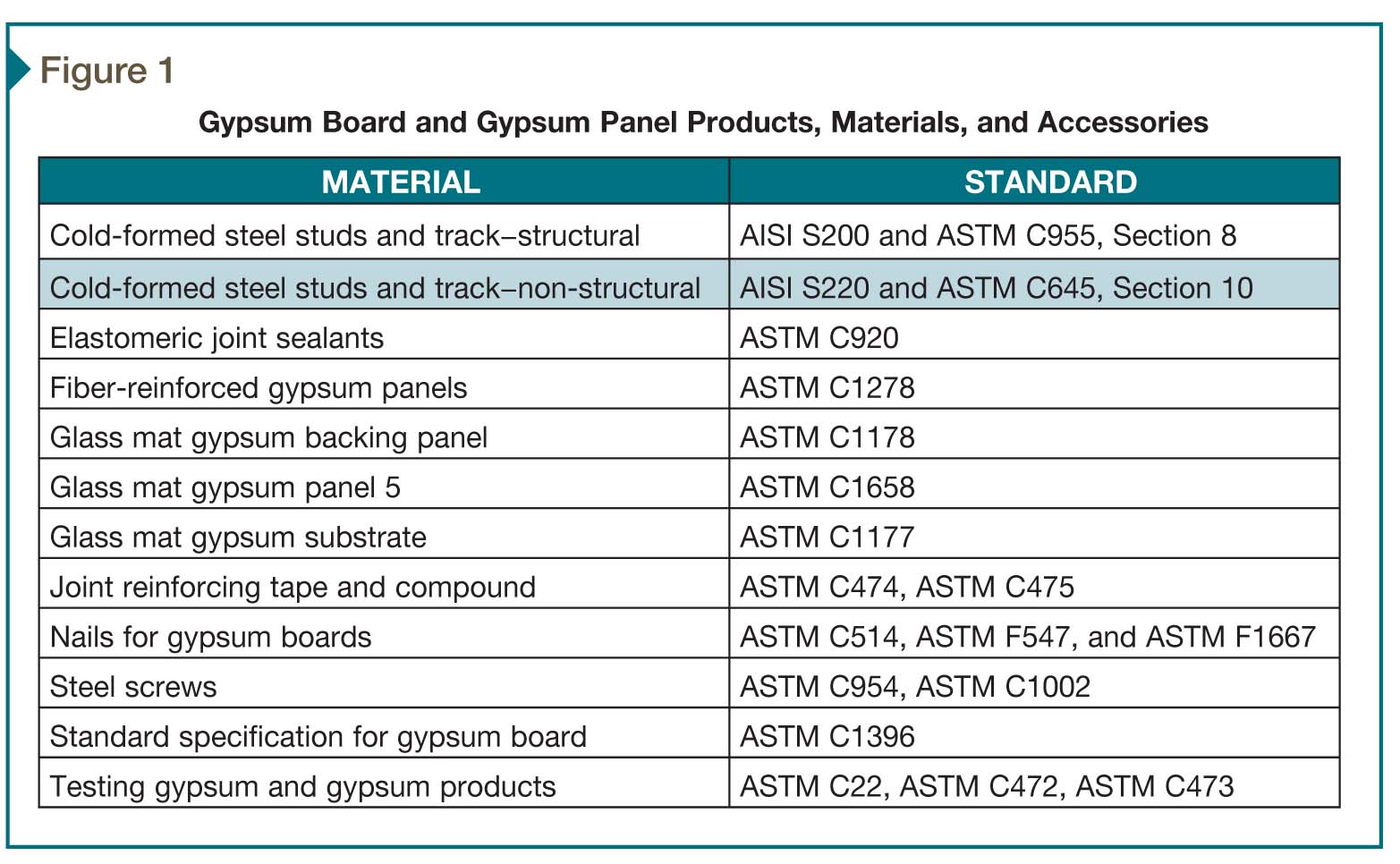
As previously indicated, the requirements for coated finished products are found in the building code. The prevalent code that is in use today, the 2012 IBC, clearly recognizes EQ coatings as compliant through reference to ASTM C645 in Chapter 25. The 2015 version of IBC, which is currently beginning the adoption process (and which will eventually replace the 2012 edition), makes the acceptance of EQ coatings even clearer.
Chapter 25 in the 2015 IBC still references part of ASTM C645, but the path to equivalent coatings now goes through a newly revised Chapter 22 (“Steel”), which now includes requirements for nonstructural steel members. For nonstructural steel members, Chapter 22 cites the American Iron and Steel Institute (AISI) S220, North American Standard for Cold-formed Steel Framing–Nonstructural Members.
It should also be noted Table 2506.2 (“Gypsum Board and Gypsum Panel Products Materials and Accessories”) in the 2015 IBC specifies that for nonstructural cold-formed steel studs and track, the standards are AISI S220 and Section 10 of ASTM C645, thus making both Chapters 22 and 25 consistent with each other. AISI S220 unquestionably permits the use of EQ coatings.
Thus, the ASTM and AISI standards now have identical requirements for corrosion protection of nonstructural steel studs—both state nonstructural members utilized in cold-formed steel framed construction must have a protective coating that conforms to ASTM A653 G40 minimum or have a protective coating with an equivalent corrosion resistance. Accordingly, EQ coatings are approved for use under both the 2012 and 2015 IBC.
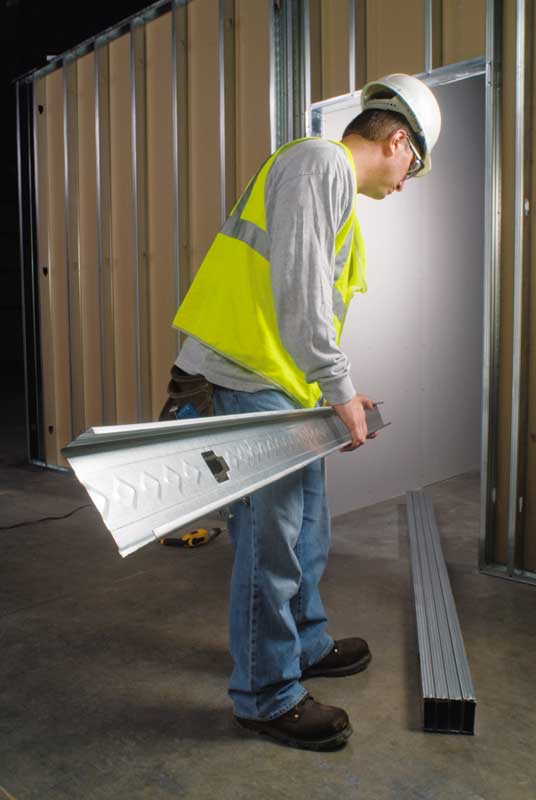
Misconception No. 2: EQ coating is a paint or primer.
Paints and primers lay on the surface of the steel and can peel or blister off. EQ coatings are not paints or primers. Rather, they form a permanent bond with the zinc-coated substrate. The bonded coating cannot be peeled off or separated from the zinc-coated steel substrate. Additionally, EQ coatings maintain their integrity when scratched, cut, drilled, or punched—commonly occurring conditions on a jobsite. This is because the combined coating offers both barrier protection (i.e. sealing off the steel substrate from moisture) and sacrificial protection (i.e. zinc in the coating sacrifices itself to keep the steel substrate from rusting). Painted coatings do not provide these additional levels of protection.
EQ coatings are not applied like paints and primers. Instead, they are applied to zinc-coated steel sheets through a precision, digitally controlled reverse-roll coating process. This reverse-roll coating process ensures complete immersion of the steel sheet in the EQ coating and ensures full coverage across the width of the coil so there are not any coating ‘skips’ or uncoated spots. The application process results in a chemical reaction that permanently bonds the EQ coating to the zinc-coated substrate. It also causes the EQ coating to penetrate and fill any cracks and voids in the existing zinc-coated substrate. This seals off the zinc layer and the carbon steel base metal beneath it to prevent formation of an oxide or rust layer. The steel is then cured at an elevated temperature to ensure completion of the bonding process.
Misconception No. 3: EQ coatings do not meet the corrosion performance of G40.
Extensive accelerated salt-spray testing in International Accreditation Service (IAS)-certified chambers shows EQ coatings provide corrosion protection equivalent to, or better than, a G40 coating. This testing was conducted in accordance with ASTM A1004, Standard Practice for Establishing Conformance to the Minimum Expected Corrosion Characteristics of Metallic, Painted-metallic, and Nonmetallic-coated Steel Sheet Intended for Use as Cold-formed Framing Members, and ASTM B117, Standard Practice for Operating Salt Spray (Fog) Apparatus.(ASTM A1004 sets forth the practice to be used
in assessing the corrosion resistance of different coatings. It mandates an ASTM B117 salt-spray
test be used for that purpose).
In an accelerated salt fog test, specimens are placed in a sealed chamber into which a fog of heated salt-infused vapor is introduced. The temperature, humidity, salt solution mixture, and water used are all specified and controlled. Testing is monitored at 24-hour intervals and samples are examined for corrosion once per day. The chamber is only opened for inspection and recording of the condition of the specimens.
ASTM A1003, Standard Specification for Steel Sheet, Carbon, Metallic- and Nonmetallic-coated for Cold-formed Framing Members, sets a 75-hour minimum duration for the test. A coating passes the test if it does not lose more than 10 percent of its coating after 75 hours. This criteria is used in the A1004 testing procedure as the pass/fail criteria. It is strictly an hourly requirement.
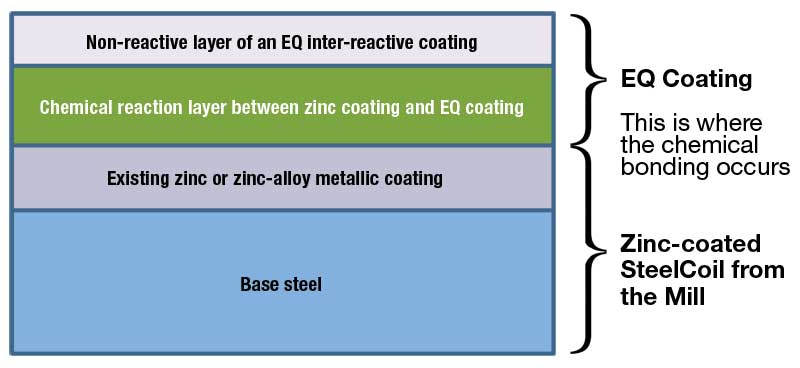
However, there is a more definitive way of proving equivalent corrosion protection. By utilizing the B117 testing procedure in a head-to-head (side-by-side) comparison of G40- and EQ-coated specimens, the most definitive determination of equivalent corrosion protection is demonstrated. The testing runs continuously until there is failure of the G40-coated specimen. If the EQ-coated specimen outlasts it, then it is a clear demonstration of equivalent corrosion protection.
There has been much discussion recently regarding how long a G40 coating will survive in a B117 salt-spray test procedure before it meets the failure criteria. The Steel Framing Industry Association (SFIA)—the largest industry association of stakeholders in the cold-formed steel industry—has conducted a joint testing program with Architectural Testing Inc. (ATI) to determine how long a G40 coating could be expected to survive the B117 test. It was determined 96 hours was the most realistic expectation. This was based on steel samples tested without any additional oils, Chemtreat, or other forms of passivation protection commonly applied to prolong the time to failure.
When EQ coatings have been tested against G40 samples with additional passivation, such as a chromium passivation, it has been observed that on average, the G40 samples begin failing at 120 hours of exposure to salt spray, and rapidly reach the 10 percent surface rust failure threshold at 220 hours. In comparison, samples with an EQ coating typically never reach above three percent surface rust, even after 240 hours of testing.
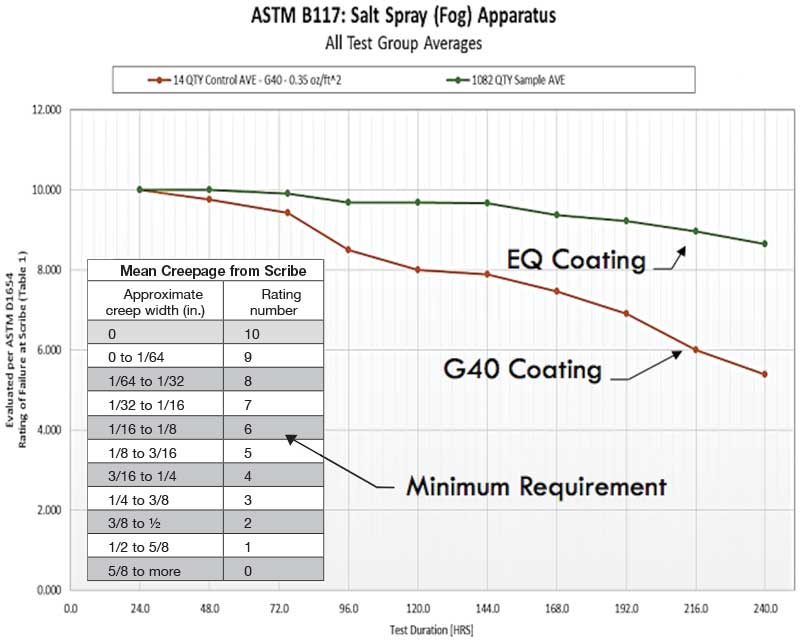
Further, when the same group of specimens are tested with a scribe that cuts through their coating down to the base steel, the EQ coating was shown in this particular test to outperform the G40. This is determined by measuring the amount of creep that occurs where the coating was scratched.
The requirement of ASTM A1003 is to achieve a ‘6’ rating on a scale of 10, with 10 being the most desired rating. While the G40 specimens fail at the ‘6’ rating, the EQ-coated specimens achieved a ‘9.5’ rating. This scribe test shows the EQ coatings are bonded and not painted onto the surface.
Manufacturers of EQ coatings are also able to demonstrate their equivalent to a G40 coating by obtaining a code compliance report issued by an independent American National Standards Institute (ANSI)-accredited International Organization for Standardization (ISO) Guide 65 agency, as well as having their testing performed at an IAS-accredited laboratory. The publication of this third-party report will offer further validation the EQ-coated steel stud meets the requirements of industry-approved codes.
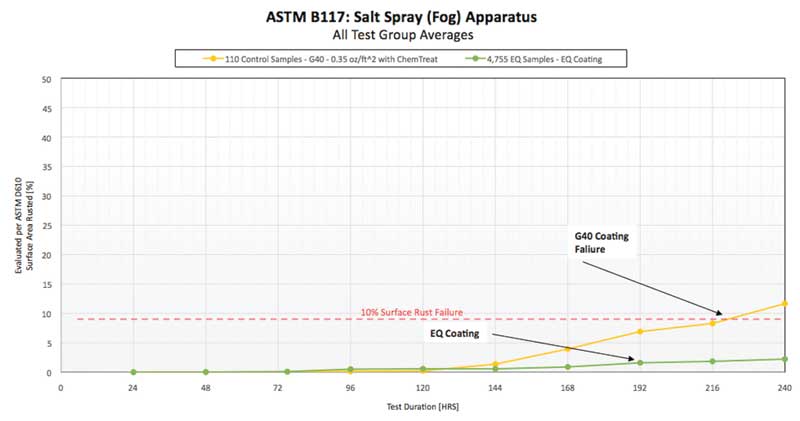
Misconception No. 4: All EQ coatings
are the same.
All EQ coatings are not created equal. While high-performance EQ coatings have been referred to generically as ‘thin organic coatings,’ ‘inter-metallic coatings,’ or ‘reactive polymer coatings,’ they should never be referred to as ‘paint,’ ‘primer,’ or ‘veneer.’ (There is no specific definition for EQ coatings—the letters are generally accepted to mean ‘equivalent’ or ‘equal.’ In addition, any other standard metallic coating other than a G40—such as the AZ50 or GF30 used by some manufacturers—is considered an EQ coating so long as it is not a G40 and provides equivalent corrosion resistance in accordance with ASTM C645, par. 4.2. Both ASTM C645 and AISI S220 require marking what coating is on the studs if it is not a G40). As mentioned, EQ-coated products are far more advanced than simple surface treatments.
Not only do EQ coatings provide superior protection, but they are also competitive in the marketplace. This is because manufacturers who use EQ coatings are able to employ excess steel coils with a zinc-based coating that is typically not a G40 coating. The coating on the less-expensive excess steel coils is then enhanced through the application of EQ coatings. This takes material that otherwise would not be usable and makes it into a new product, thus saving energy and removing material from the waste stream.
Additionally, EQ coatings are able to be used in all types of interior nonstructural partitions, whether fire-rated or non-fire-rated. The properties of the coating on a stud are not considered when the structural properties of the stud are calculated. The properties are calculated based on the steel alone without the coating.
How to specify EQ coatings?
This article’s purpose is to ensure design/construction professionals have accurate information regarding EQ coatings and their performance. If a specifier chooses to include EQ-coated steel studs in project specifications, here are the code-written rules to follow:

1. The applicable product standards are ASTM C645 for the 2012 IBC, or AISI S220 for the 2015 IBC. These standards define the stud steel sheet requirements, including minimum return lip, minimum prescriptive thickness or performance, and minimum section properties.
2. Steel framing members must use an ASTM A653 G40 coating or a coating that provides corrosion resistance equivalent to a G40 coating. Any coating other than G40 must demonstrate it provides equivalent corrosion resistance. Code Compliance Research Reports (CCRRs) are one way to demonstrate equivalence.
3. Manufacturers of steel framing members with EQ coatings should be able to supply a code report from an independent ANSI-accredited agency that certifies the coatings do in fact meet the ASTM C645 and AISI S220 equivalent corrosion protection requirement.
Following these guidelines will help ensure that the technical specifications direct contractors to use code-approved coatings and avoid the use of flimsy barrier coatings that, in all likelihood, get scratched, cut, and damaged on the construction site. EQ coatings have proven to be an innovation to embrace—one that is also clearly approved by the International Building Code.
Michael C. Kerner, FASTM, CSI, CDT, is code development manager for cold-formed steel (CFS) framing manufacturer ClarkDietrich Building Systems. With more than 35 years of industry experience, he is the immediate past chair of ASTM’s Committee C11 on Gypsum and Related Building Materials and Systems, and is one of the two vice chairs of ASTM’s Committee A05 on Metallic-coated Iron and Steel products. Kerner is an ASTM Award of Merit recipient, and a member of CSI and the International Code Council (ICC). He can be reached at michael.kerner@clarkdietrich.com[2].
- www.constructionspecifier.com/ specifying-eq-coatings-for-steel-studs: http://www.constructionspecifier.com/ specifying-eq-coatings-for-steel-studs
- michael.kerner@clarkdietrich.com: mailto:michael.kerner@clarkdietrich.com
Source URL: https://www.constructionspecifier.com/eq-coatings-dispelling-misconceptions-through-facts/